A cinnamon allergy is when your body has an irrational immune system response to cinnamon (allergic reaction). Cinnamon and spice allergies are not common, which means thoroughly researched information is hard to come by, that’s where I come in!
I am providing you with as much credible information as possible on cinnamon allergies. We will be diving into possible symptoms, allergic reactions, and potential treatment options for cinnamon allergies.

As an Amazon.com affiliate, I may receive compensation for qualifying purchases.
Table of Contents
Understanding a Cinnamon Allergy
A cinnamon allergy is an immune system response to proteins found in cinnamon, a popular spice derived from the bark of trees belonging to the Cinnamomum genus. This allergic reaction occurs when the immune system perceives these proteins as harmful invaders and triggers a defensive response, leading to a range of symptoms.
Can you be allergic to cinnamon?
Yes, you can be allergic to cinnamon and other spices, but they are considered very rare. A cinnamon allergy sparks an immune response that causes allergic reactions, just like a food allergy.
There are non-allergic reactions or intolerances to cinnamon which are more commonly seen. These reactions do not involve the immune system, and the symptoms typically present as gastrointestinal or skin irritations.
Is a cinnamon allergy a nut allergy?
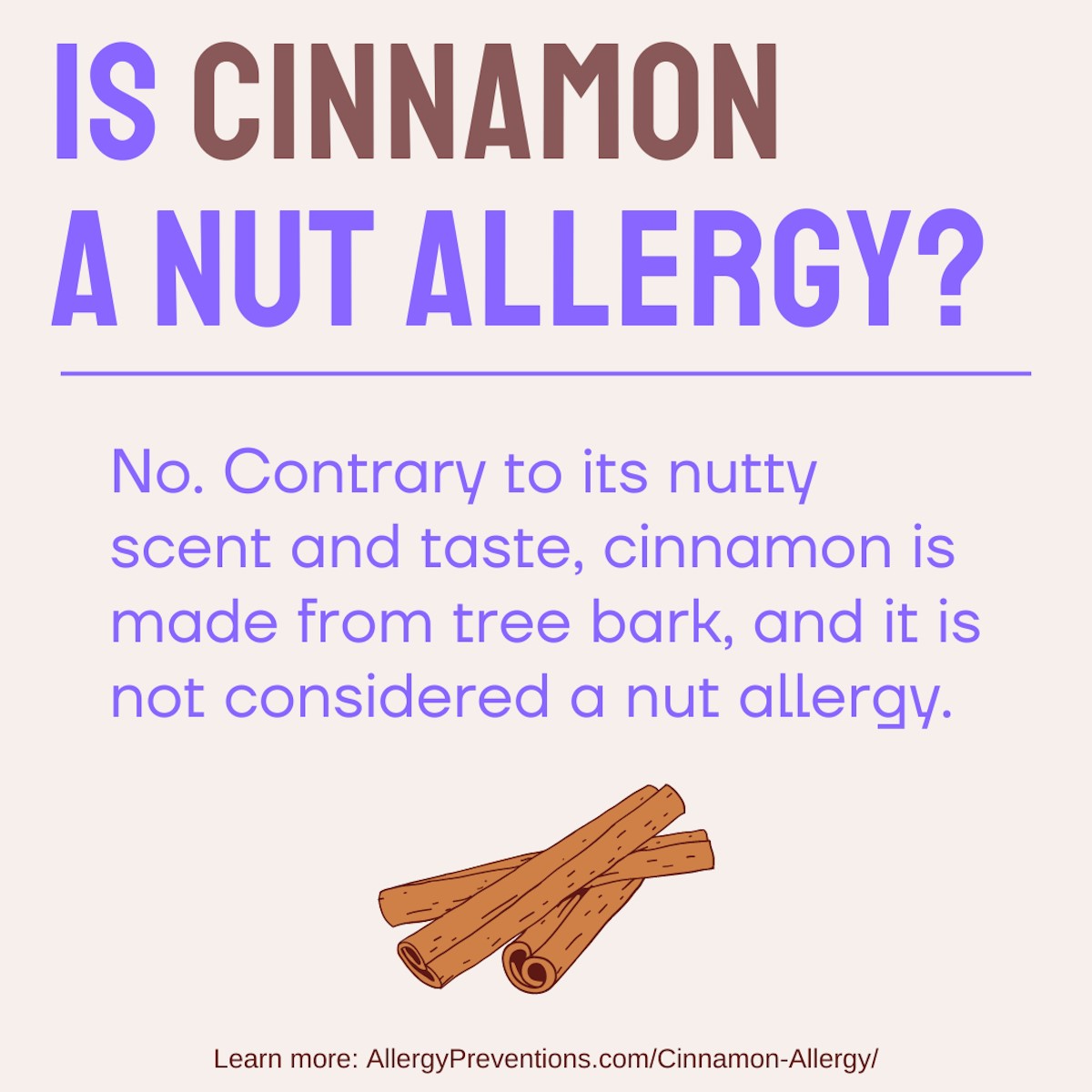
The short answer is no, cinnamon is not a not allergy. While cinnamon may have a nutty aroma and flavor, it’s actually derived from the bark of a tree, not nuts. Some individuals with nut allergies might also have sensitivities to spices like cinnamon due to cross-reactivity, these allergies are distinct and involve different proteins.
It’s important to differentiate between various allergies and seek proper medical evaluation to accurately diagnose and manage any allergies you may have.
What about artificial cinnamon?
Yes, you can be allergic to artificial cinnamon. There are a few documented cases of people developing Cinnamon Contact Stomatitis (CCS) from using products that contain artificial cinnamon ingredients. CCS can Cause pain, bumps, and/or a burning sensation on the tongue.

An article from the 1st Dermatology University Clinic, explains that a patient had white patches on the side of her tongue, and was told to avoid cinnamon gum. The doctor believed that the symptoms were caused by artificial cinnamon. When the patient came back for her follow-up after not chewing the gum, her tongue was completely normal. The doctor concluded that the symptoms of CCS were caused by artificial cinnamon.
Cinnamon Allergy Causes
Cinnamon allergies commonly stem from a protein known as “cinnamaldehyde.” This protein is accountable for the distinct and delightful flavor and aroma associated with cinnamon.
For individuals allergic to cinnamon, the immune system’s response to the cinnamon protein is exaggerated, triggering an allergic reaction upon contact.
How common is a cinnamon allergy?

A cinnamon allergy affects about 1 in 1200 adults on average, which is considered a rare allergy. Cinnamon allergies fall into the category of “spice allergy” which lumps allergic reactions to all spices, not just cinnamon. Researchers believe that Spice allergies affect between 4 and 13 of 10,000 adults.
Another way to look at how common an allergy to spices is, 0.04% – 0.13% of all adults have a spice allergy. Now, there is no way of telling how many of those spice allergies are cinnamon specifically, which makes a cinnamon allergy potentially even rarer.
Can you develop a cinnamon allergy?
Yes, you can develop a cinnamon allergy. Anyone can develop allergies to substances that they did not have an allergy to before. Allergies happen when our body overreacts to a substance (like cinnamon) and sees the substance as a “threat”. The immune system begins to “attack” the substance which gives us our allergic reaction symptoms.
How to Tell if You Have an Allergy or Sensitivity to Cinnamon
You may be able to tell if you have a cinnamon allergy or sensitivity by analyzing your symptoms. Allergies and sensitivities have different characteristics that may point you towards one condition over the other. When reading the definitions below, ask yourself, “Do I fit more in the allergy or sensitivity category?”
Do keep in mind that you may be allergic AND sensitive to cinnamon or other spices.
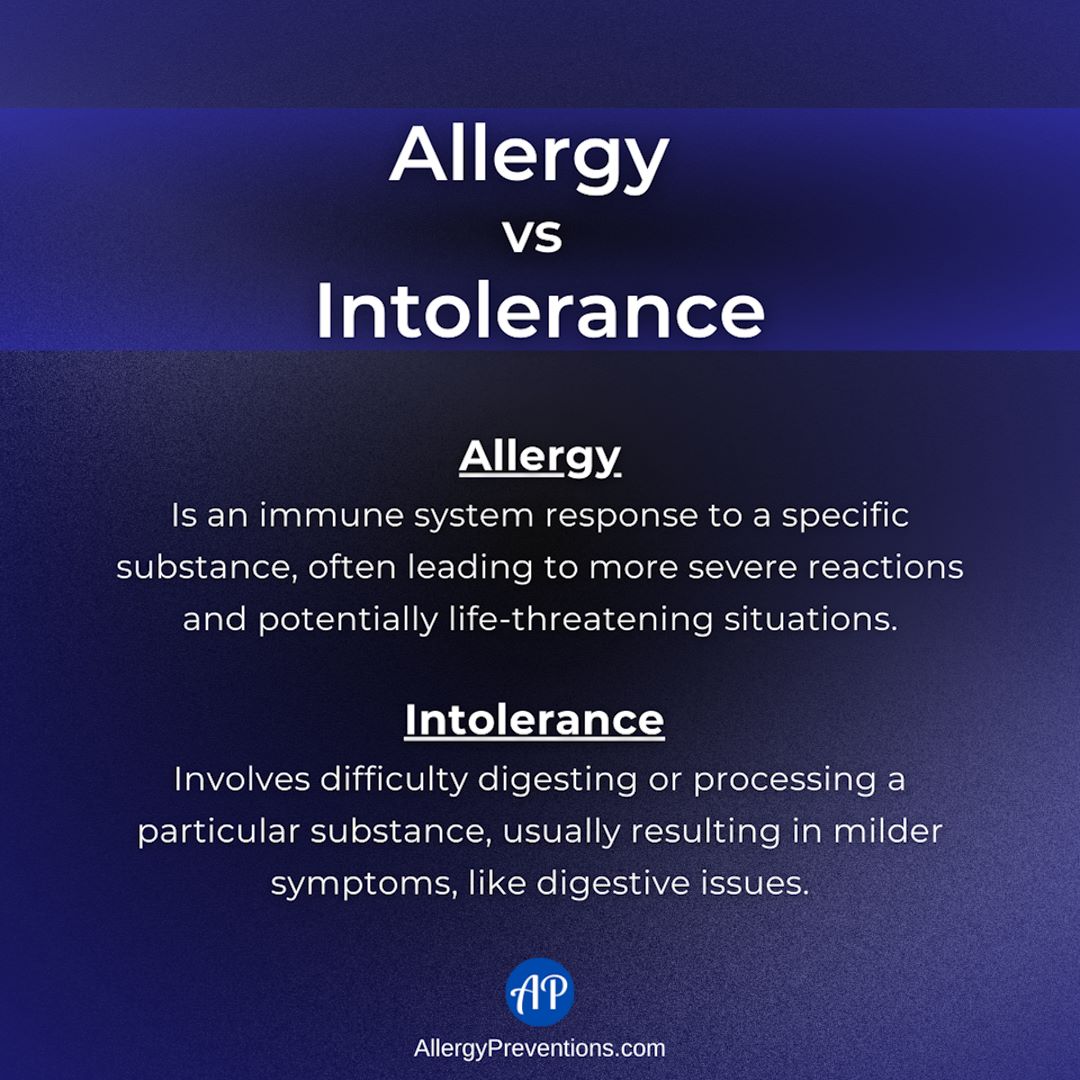
Allergy
Typically a cinnamon allergy shows up as an immune system response reaction. Immune system responses may be in the form of hives, swelling of the throat, wheezing or trouble breathing, and anaphylaxis.
Sensitivity/Intolerance
Non-immune system response reactions. Possible symptoms of cinnamon sensitivity are a rash, irritation from direct contact, or lung irritation if inhaled.
To further explain sensitivities and intolerances, let’s use lactose as an example:
If you are lactose intolerant you get gassy and abdominal pain, but you are not allergic to dairy per se. The intolerance is causing non-immune symptom reactions (i.e. unable to digest, irritated digestive system).
If cinnamon consumption doesn’t “sit well” for you when you eat it, or your skin gets mad (not hives) when exposed to cinnamon, I would bet that you have a sensitivity. If you have trouble breathing or breaking out in hives when you eat (or are exposed to) cinnamon, you probably have an allergy.
Additionally, cinnamon that has become airborne can cause both cinnamon allergy and intolerance symptoms. If cinnamon has become airborne, it is best to steer clear of the area until the cinnamon settles.
Cinnamon Allergy Symptoms in Adults
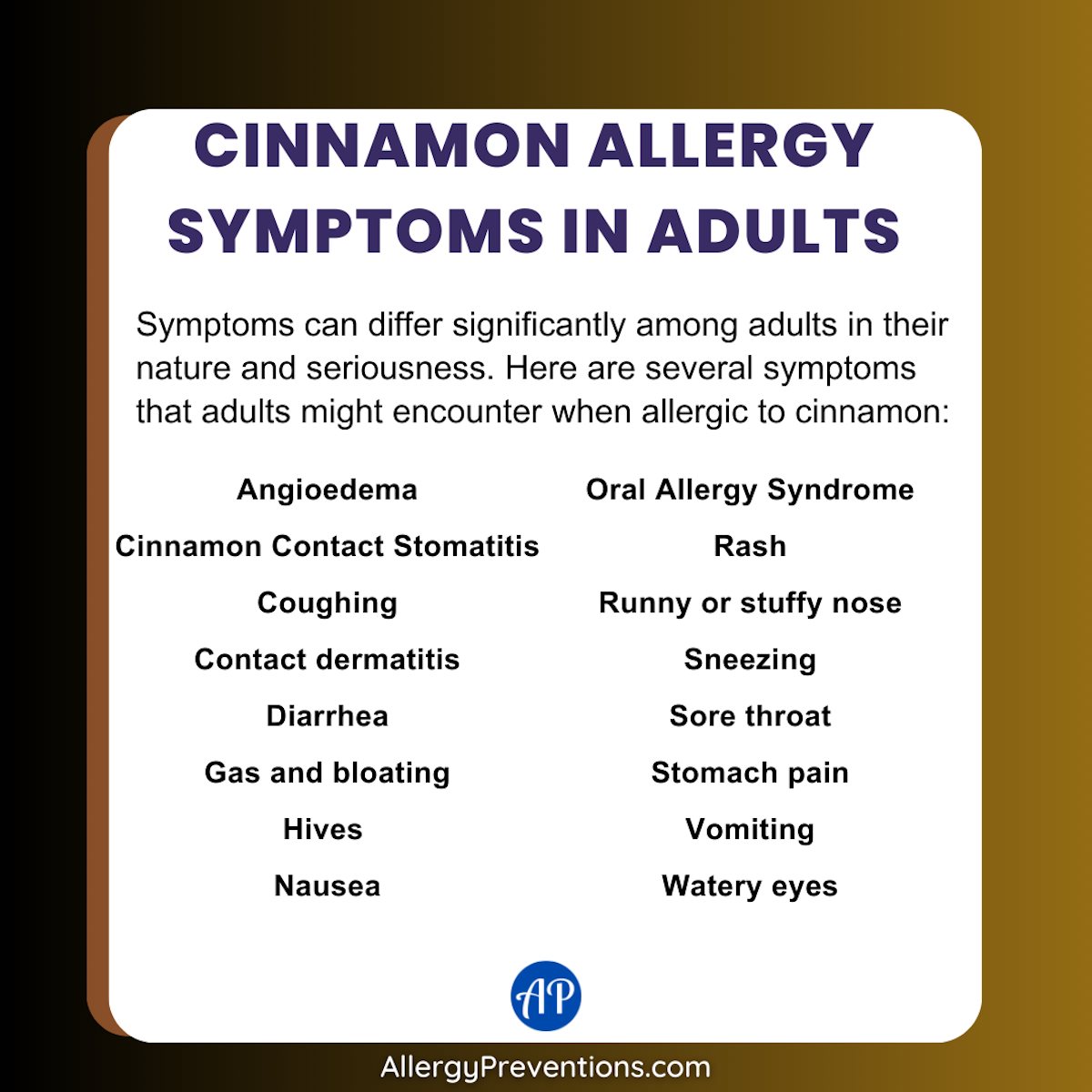
Cinnamon allergy symptoms in adults can vary widely in terms of their type and severity. Here are some common symptoms that adults may experience if they have a cinnamon allergy:
- Angioedema: Swelling, often around the eyes, lips, face, or throat. Severe cases can lead to difficulty breathing or swallowing.
- Cinnamon Contact Stomatitis (CCS): Tongue pain, bumps, or burning.
- Coughing: An allergy-related cough, sometimes accompanied by wheezing or shortness of breath.
- Contact dermatitis: Skin irritation or rash that occurs after direct contact with cinnamon or cinnamon-containing products.
- Diarrhea: Frequent and loose bowel movements.
- Gas and bloating: Accumulation of gas in the stomach or intestines, causing bloating and discomfort.
- Hives (Urticaria): Raised, red, itchy welts on the skin that can vary in size and shape.
- Nausea: Feeling of queasiness or an urge to vomit.
- Oral Allergy Syndrome (OAS): Itching or swelling of the lips and tongue.
- Rash: A red, itchy, and often inflamed area of the skin.
- Runny or stuffy nose: Excess mucus production or nasal congestion.
- Sneezing: Especially common when the cinnamon is airborne.
- Sore throat: Irritation and discomfort in the throat, often accompanied by itchiness.
- Stomach pain: Abdominal discomfort or cramping.
- Upset stomach: General discomfort or unease in the stomach area.
- Vomiting: Forceful expulsion of stomach contents through the mouth.
- Watery eyes: Airborne cinnamon can irritate the eyes.
A severe allergic reaction to cinnamon or anaphylaxis is possible. Anaphylaxis is a potentially life-threatening reaction that can involve a combination of symptoms, such as swelling of the throat, difficulty breathing, rapid drop in blood pressure, dizziness, and loss of consciousness. Immediate medical attention is essential.
Diagnosing a Cinnamon Allergy

Diagnosing a cinnamon allergy involves a series of steps, medical tests, and consultation with healthcare professionals. If you suspect you have a cinnamon allergy, here’s how the diagnostic process typically unfolds:
- Medical History Assessment: Your doctor will begin by taking a detailed medical history, including any previous allergic reactions, symptoms, and exposure to cinnamon or cinnamon-containing products. This information will help guide further testing.
- Symptom Evaluation: Describe the symptoms you’ve experienced after consuming cinnamon or products containing cinnamon. Be specific about the onset, duration, and severity of the symptoms.
- Physical Examination: A physical examination might be conducted to assess any visible signs of allergic reactions, such as skin rashes or swelling.
- Skin Prick Test: In this common test, small amounts of allergens, including cinnamon extract, are applied to your skin with a tiny needle. If you’re allergic, you may develop a raised, itchy bump at the test site.
- Blood Tests: Blood tests, such as the ImmunoCAP test, measure the levels of specific antibodies (IgE) produced in response to allergens like cinnamon. Elevated IgE levels can indicate an allergic reaction.
- Patch Testing (If Relevant): If you suspect a skin reaction to cinnamon, a patch test may be performed. Small amounts of cinnamon extract are applied to adhesive patches, which are then placed on your skin for 48 hours. Your doctor will check for any skin reactions afterward.
- Oral Food Challenge (If Necessary): In some cases, if other tests are inconclusive, your doctor might conduct an oral food challenge. You’ll consume a controlled amount of cinnamon under medical supervision to observe any allergic reactions.
- Elimination Diet: If your doctor suspects a cinnamon allergy, they might recommend an elimination diet. You’ll remove all sources of cinnamon from your diet for a period and then reintroduce it while monitoring for allergic reactions.
- Consultation with an Allergist: If your primary care doctor suspects an allergy, they might refer you to an allergist, a specialist who is trained in diagnosing and managing allergies.
Overcoming a Cinnamon Allergy

How do you overcome a cinnamon allergy? Overcoming a cinnamon allergy requires a multifaceted approach that involves understanding your allergy, making dietary adjustments, managing exposure, and seeking professional guidance. Here are steps you can take to overcome a cinnamon allergy:
Avoid Cinnamon Products
The most effective way to manage a cinnamon allergy is to completely avoid cinnamon and cinnamon-containing products. Carefully read ingredient labels on packaged foods, beverages, and personal care products to ensure they are free from cinnamon.
Foods to Avoid with a Cinnamon Allergy
Cinnamon spice is not included with “everything nice” if you are allergic. If you have a cinnamon allergy, you should read the labels, and potentially avoid the following foods:
- All labels stating: “Natural or Artificial Cinnamon Flavor”
- Cassia
- Cereals
- Ceylon
- Chicken Tikka Masala
- Cinnamon
- Cinnamon Rolls
- Cinnamon Spice
- Cinnamon Sticks
- Cinnamomum cerum
- Cookies
- Indian Butter Chicken
- Mexican Chocolate Pudding
- Pies
- Pumpkin Spice
- Saigon
This is not an all-inclusive list of foods that contain cinnamon, but hopefully, it has sparked some ideas on where cinnamon might be hiding in your foods. Take the time to read labels and understand your cinnamon allergy, and find what works for you.
Spices to Avoid With a Cinnamon Allergy
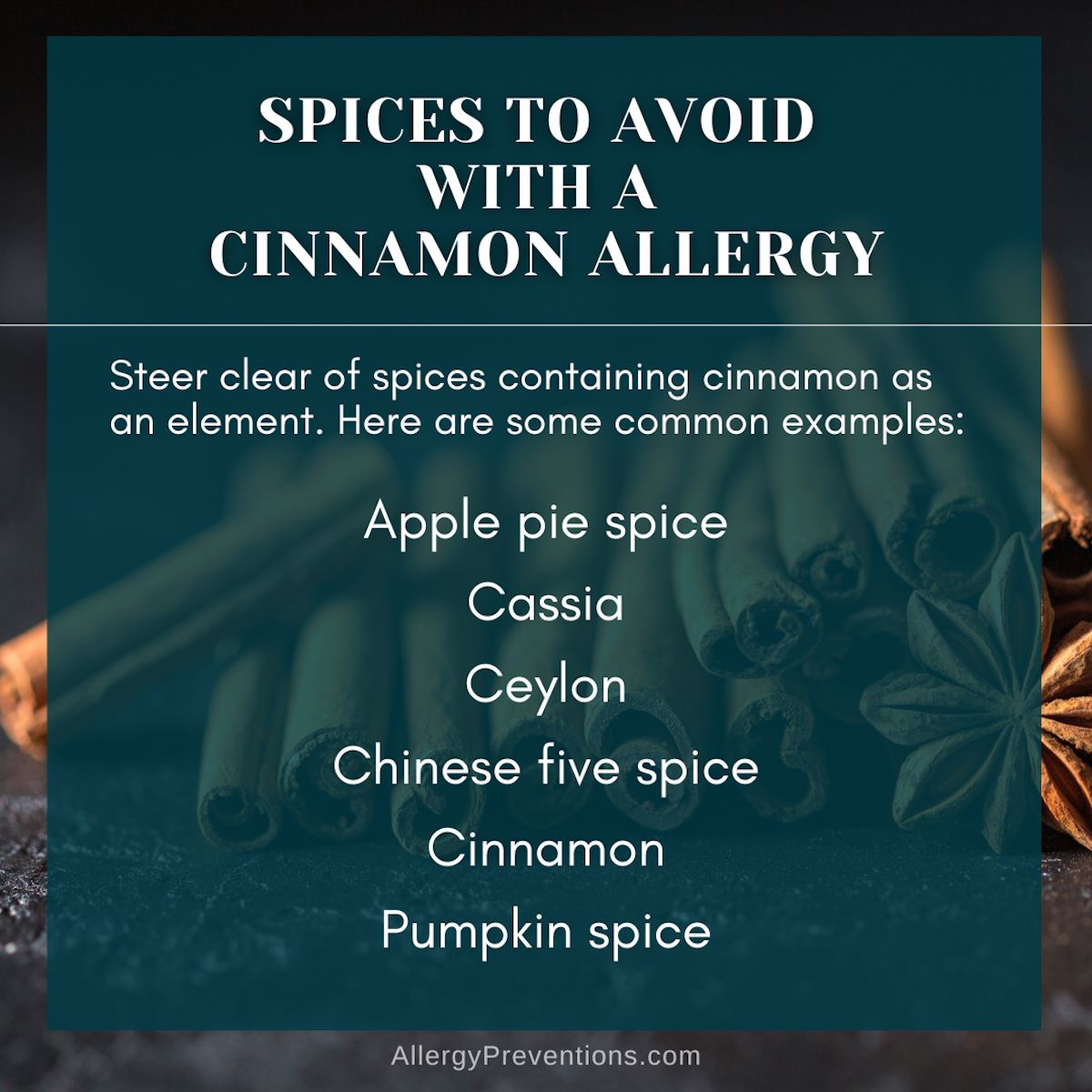
You will want to avoid using spices that have cinnamon as an ingredient, here are some examples:
- Apple pie spice
- Cassia
- Ceylon
- Chinese five spice
- Cinnamon
- Pumpkin spice
Cook and Bake at Home

Cooking at home becomes essential when you have a cinnamon allergy due to several crucial reasons that revolve around your health, safety, and peace of mind. Here’s why cooking at home is strongly recommended for individuals with a cinnamon allergy:
- Ingredient Control: When you prepare meals at home, you have complete control over the ingredients that go into your dishes. This allows you to eliminate any risk of accidentally consuming cinnamon or cinnamon-containing products.
- Label Scrutiny: Cooking at home enables you to thoroughly scrutinize ingredient labels. You can ensure that each component of your meal is free from cinnamon or any form of the spice, thus avoiding potential allergic reactions.
- Avoid Cross-Contamination: Cross-contamination can occur when utensils, surfaces, or cookware used for cinnamon-containing items come into contact with your food. By cooking at home, you eliminate this risk and maintain a safe cooking environment.
- Allergen-Free Environment: Your kitchen becomes a safe haven where you can create meals without worrying about unexpected exposure to cinnamon. This sense of security contributes to your overall well-being.
Inform Restaurant Staff and Family

When dining out, inform restaurant staff about your cinnamon allergy. Ask about ingredients used in dishes and emphasize the importance of avoiding cinnamon. Educate friends and family about your allergy to ensure they are cautious when preparing meals.
The goal is to manage your symptoms and prevent an allergic reaction, by educating others you will be able to have a safe and enjoyable dining experience.
Know the Common Alternative Names for Cinnamon
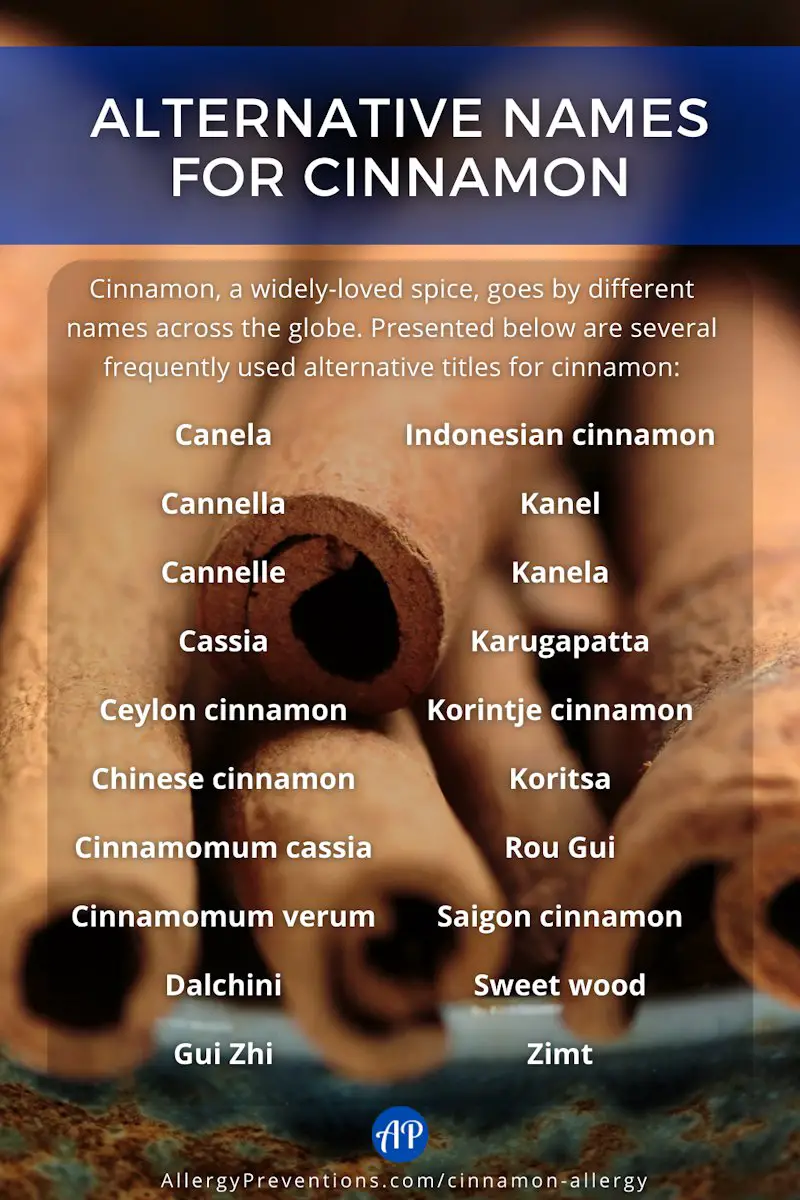
Cinnamon is a popular spice known by various names around the world. Here are some of the common alternative names for cinnamon:
- Canela
- Cannella
- Cannelle
- Cassia
- Ceylon cinnamon
- Chinese cinnamon
- Cinnamomum cassia
- Cinnamomum verum
- Dalchini
- Gui Zhi
- Indonesian cinnamon
- Kanel
- Kanela
- Karugapatta
- Korintje cinnamon
- Koritsa
- Rou Gui
- Saigon cinnamon
- Sweet wood
- Zimt
Please be aware that these are among the most commonly used terms for cinnamon globally. However, there are still numerous other words not included in this list, so exercise caution.
Manage Allergic Reactions
If you accidentally consume cinnamon, be prepared to manage any mild allergic reactions you might experience. Keep antihistamines, EpiPens, or other prescribed medications on hand as directed by your healthcare provider. Of course, if you have severe allergic reactions and you use your EpiPen, seek emergency medical assistance, even if your symptoms are getting better.
Use Cinnamon Substitutes
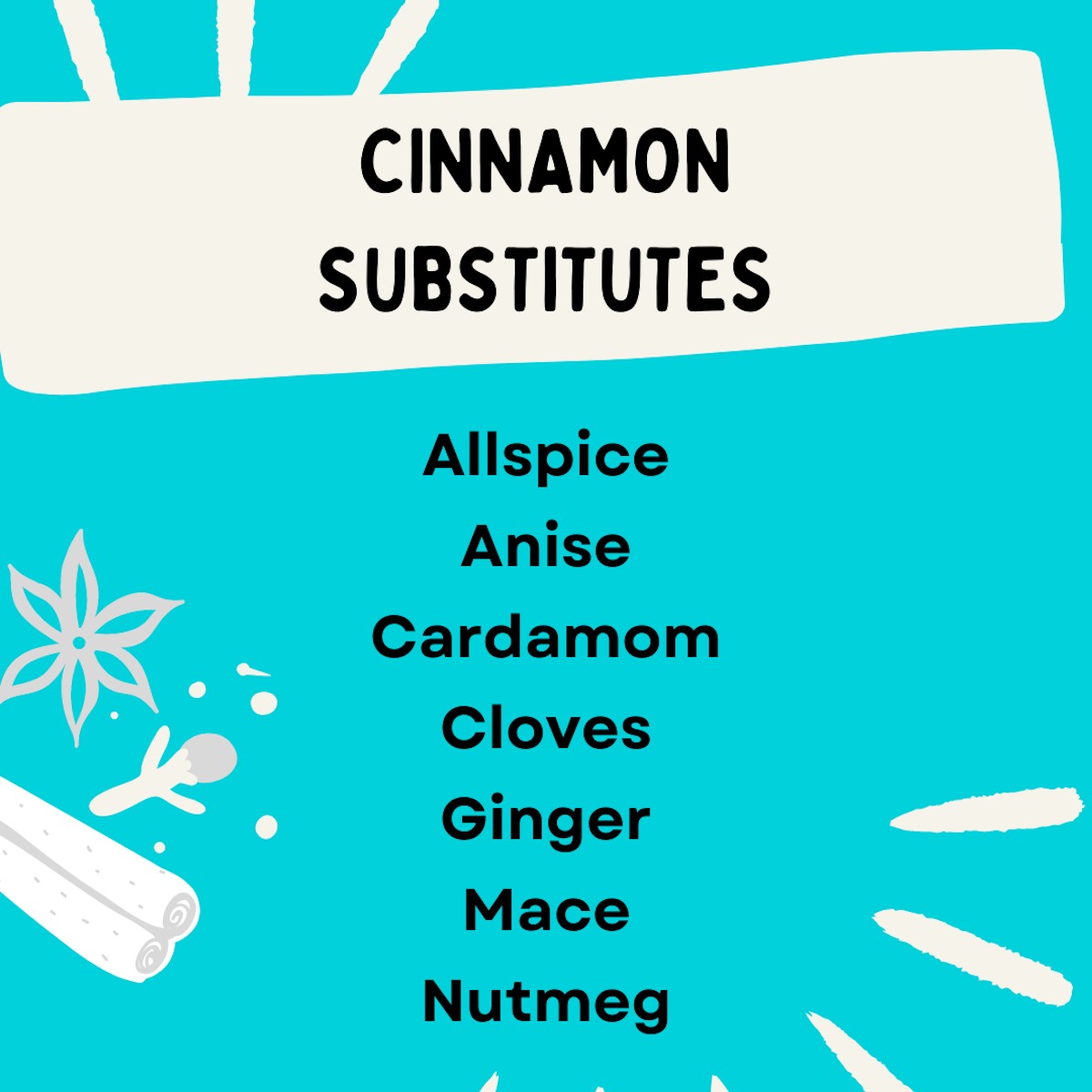
Finding the right cinnamon substitute for your needs may take so time to figure out which new “cinnamon flavor” you like best. Here are common spices you can explore using in place of cinnamon:
- Allspice
- Anise
- Cardamom
- Cloves
- Ginger
- Mace
- Nutmeg
Some of these spices have very different flavor profiles, so you will need to tweak your recipe a bit to get the cinnamon flavor just right. Homegrownherbgarden.com has an article about cinnamon replacements, which I used to assist in creating this list.
Wear a Medical Alert Bracelet

Wearing a medical alert bracelet effectively communicates your allergy to others, particularly in critical situations. The bracelet has the potential to be a life-saving tool when you are unable to respond due to an allergic reaction.
A modest (or super fancy) bracelet provides both you and your loved ones with a reassuring sense of security when you’re out and about. You can buy a cinnamon allergy medical alert bracelet on Amazon.
Cinnamon Allergy FAQs
Cinnamon allergies come with many frequently asked questions. Here are the top FAQs associated with this condition.
Can the smell of cinnamon cause an allergic reaction?
Yes, but the chances of cinnamon causing an allergic reaction is rare. A very small percentage of the population has an allergy to cinnamon or other spices. The most likely cause of your symptoms when smelling cinnamon is irritation.
Is cinnamon a high-allergy food?
Cinnamon is not typically considered a high-allergy food. While allergic reactions to cinnamon do occur, they are relatively uncommon compared to more common allergens like nuts, dairy, and shellfish.
How long does a cinnamon allergy last?
A cinnamon allergy can persist throughout one’s life. The duration of an allergic reaction to cinnamon can range from several hours to multiple days, and in some cases, even longer. Numerous variables influence the duration of symptoms, including the extent of the allergy’s severity, the duration of allergen exposure, and the method of exposure.
Does cinnamon cause histamine?
Yes, cinnamon has the potential to trigger the release of histamine in certain individuals. Cinnamon contains compounds like cinnamaldehyde that can promote the release of histamine in some people, leading to allergic-like symptoms. However, not everyone will react in the same way, and the impact of cinnamon on histamine levels can vary from person to person.
Can babies be allergic to cinnamon?
Yes, babies can indeed have allergies to cinnamon, just as they can develop any other type of food allergy. Allergies can emerge during all stages of life.
